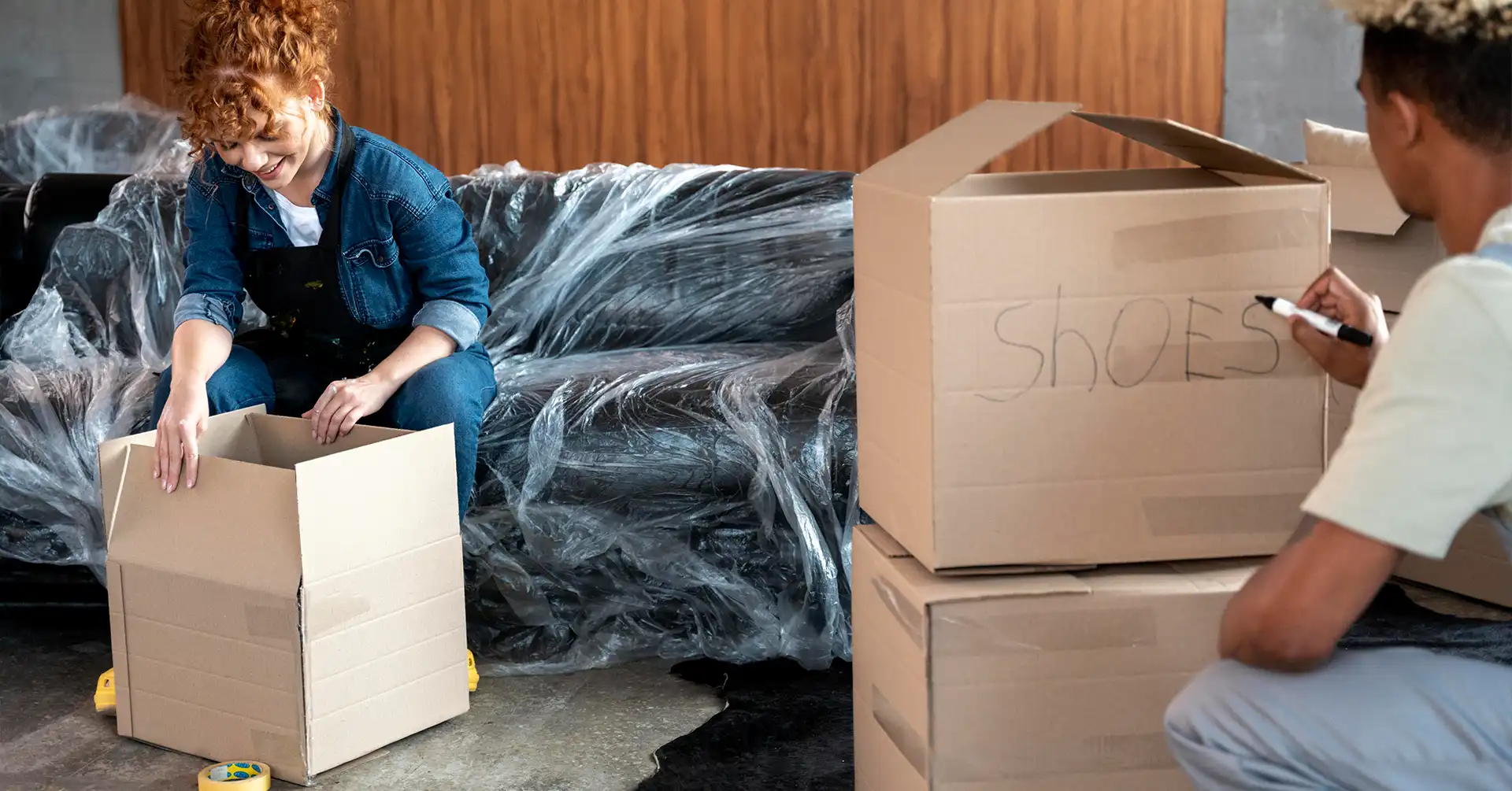When it comes to safeguarding your belongings, packing for storage is a crucial step to ensure their safety and longevity. Properly packing your items not only protects them from damage but also makes the entire storage process smoother and more organized. In this section, we’ll delve into the significance of packing for storage, exploring why it’s essential and how it sets the foundation for a hassle-free experience. Let’s unpack the key reasons why investing time and effort in effective packing techniques can make a world of difference when it comes to storing your cherished possessions.
Decluttering and Sorting
Tips for Decluttering Before Packing
Before embarking on the process of Packing for Storage, it’s essential to declutter your belongings. Follow these practical tips to streamline your items effectively:
- Start Early: Begin the decluttering process well in advance to allow ample time for decision-making.
- Assess Each Item: Evaluate each item’s necessity. Ask yourself if you’ve used it recently or if it holds sentimental value. If not, consider donating, selling, or recycling it.
- Create Categories: Divide your belongings into categories such as clothes, electronics, and furniture. This categorization simplifies decision-making.
- Set Realistic Goals: Establish achievable goals for decluttering each day. This prevents overwhelm and ensures steady progress.
- Consider Storage Space: Keep in mind the storage space you have available. Only retain items that you have room for in your storage unit.
Organizing and Sorting Items for Storage
Once you’ve decluttered, organizing and sorting your items efficiently will make your Packing for Storage process much smoother:
- Use Clear Containers: Transparent boxes allow you to see the contents without opening them, aiding easy identification.
- Label Everything: Label each box clearly with its contents and destination room. This simplifies the unpacking process later on.
- Store Seasonal Items Together: Pack seasonal items like winter clothes or holiday decorations separately. This ensures you can access them when needed without rummaging through all your boxes.
- Fragile Items First: Pack delicate or fragile items with extra care. Use bubble wrap and packing paper to safeguard them against damage.
- Maximize Vertical Space: Use shelving units to make the most of your storage unit’s vertical space. Place lighter items on higher shelves and heavier items closer to the ground for stability.
By following these decluttering and organizing tips, your Packing for Storage experience will be efficient, stress-free, and well-organized.
Choosing the Right Storage Unit
When it comes to Packing for Storage, selecting the appropriate storage unit is a crucial decision. Here, we’ll guide you through the factors to consider and the advantages of different types of storage units to ensure your belongings are safe and secure.
Factors to Consider When Selecting a Storage Facility
Before making a decision, it’s essential to weigh several factors to guarantee your items remain in top condition while in storage:
- Location: Choose a storage facility that is conveniently located, allowing easy access whenever you need to retrieve or add items to your storage space.
- Security: Opt for a storage unit with robust security measures such as surveillance cameras, gated access, and on-site staff to ensure your belongings are protected around the clock.
- Cleanliness: A clean and well-maintained facility reduces the risk of pests and damage to your items. Inspect the storage units and common areas before making a choice.
- Climate Control: Depending on the climate in your region, consider a climate-controlled unit to safeguard items sensitive to temperature and humidity changes, such as wooden furniture and electronics.
- Size: Select a storage unit that perfectly fits your needs. Avoid overstuffing the unit, which can lead to damage, or choosing a unit much larger than necessary, which wastes money.
Different Types of Storage Units and Their Advantages
Storage facilities offer various types of units tailored to different needs. Understanding these options can help you make an informed decision:
- Standard Units: These units are similar to garage spaces and are suitable for items that are not susceptible to temperature changes. They are cost-effective and come in various sizes.
- Climate-Controlled Units: Ideal for items like antique furniture, electronics, and artwork, these units maintain a consistent temperature and humidity level, protecting your belongings from extreme weather conditions.
- Drive-Up Units: With these units, you can drive your vehicle directly to the storage space, making loading and unloading heavy or bulky items hassle-free.
- Mobile Storage: This convenient option delivers a storage container to your doorstep, allowing you to pack at your own pace. Once packed, the container is picked up and stored securely until you need your items again.
- Choosing the right storage unit is the first step in ensuring a stress-free Packing for Storage experience. By considering these factors and understanding the different types of units available, you can confidently store your belongings, knowing they are in safe hands.
Choosing the Right Packing Supplies for Packing for Storage
When it comes to packing for storage, having the right supplies is crucial to ensure your belongings stay safe and secure. Here’s a breakdown of the essential packing supplies you’ll need and how to select the appropriate materials for different items.
Boxes: Sturdy Foundations for Your Belongings
Boxes are the building blocks of any successful storage endeavor. Opt for sturdy, corrugated boxes in various sizes. Small boxes work well for heavy items like books, while larger ones are perfect for bedding and clothing. Make sure the boxes are clean, dry, and in good condition to provide a solid foundation for your items.
Bubble Wrap: Cushioning Fragile Items
Fragile items like glassware, ceramics, and electronics require extra care. Bubble wrap acts as a protective cushion, absorbing shocks and preventing damage during transit and storage. Wrap fragile items individually in several layers of bubble wrap to ensure they are well-protected.
Packing Paper: For Delicate Surfaces
Packing paper is excellent for wrapping delicate surfaces such as artwork, mirrors, and wooden furniture. It provides a protective layer without scratching or damaging the items. Crumple paper and place it at the bottom of the boxes for additional cushioning.
Tape: Seal Your Boxes Securely
Use high-quality packing tape to seal your boxes securely. Make sure to reinforce the bottom and top seams of the boxes with several strips of tape to prevent them from coming apart. Avoid using duct tape, as it may not provide a strong enough seal for long-term storage.
Plastic Wrap: Bundle Loose Items
Plastic wrap or stretch wrap is handy for bundling loose items together. Use it to keep items like utensils, tools, or cords organized. Wrapping furniture with plastic wrap can prevent scratches and dust accumulation during storage.
Choosing the Right Materials for Different Items
Clothing and Fabric Items:
- Use wardrobe boxes for hanging clothes to keep them wrinkle-free.
- Fold and pack other clothing items in clean, dry boxes or vacuum-sealed bags to save space.
Electronics and Appliances:
- Original packaging is ideal for electronics. If unavailable, use sturdy boxes and bubble wrap.
- Remove batteries from electronic devices to prevent leakage during storage.
Furniture:
- Disassemble furniture whenever possible to save space and prevent damage.
- Use furniture covers or blankets to protect pieces from scratches and dust.
Fragile Items:
- Wrap fragile items individually in bubble wrap and place them in boxes with ample cushioning.
- Clearly, label boxes containing fragile items to ensure careful handling.
Books and Documents:
- Pack books flat to prevent warping and damage to their spines.
- Use document storage boxes for important papers, ensuring they are well-organized and labeled.
Packing Strategies for Various Items
When it comes to Packing for Storage, it’s essential to adopt specific strategies tailored to different types of items. Here’s how you can pack various items efficiently and securely:
Clothing and Accessories
To pack clothing and accessories effectively, start by cleaning everything thoroughly. Use sturdy boxes or plastic containers to prevent moisture and pests. Fold clothes neatly to maximize space and minimize wrinkles. Utilize vacuum-sealed bags for items like blankets and winter coats to save space. For accessories like jewelry, use small containers or pouches to keep them organized and tangle-free.
Furniture and Larger Items
Disassemble furniture whenever possible to save space and make it easier to transport. Wrap pieces in blankets or bubble wrap to protect them from scratches and dents. Use furniture covers to shield items from dust. Place smaller furniture components and hardware in labeled bags and tape them securely to the corresponding furniture piece.
Electronics and Appliances
Before packing electronics and appliances, remove all cords and accessories. Pack them separately in labeled bags. Use original packaging whenever available; if not, wrap items in bubble wrap and place them in sturdy boxes. Fill empty spaces with packing paper or bubble wrap to prevent shifting. Clearly label fragile electronic items and indicate which side should stay up.
Fragile Items and Glassware
Fragile items and glassware require extra care. Wrap each item individually in bubble wrap or packing paper. Fill empty spaces in boxes with crumpled paper or bubble wrap to minimize movement. Use sturdy boxes and clearly label them as fragile. Place heavier items at the bottom and lighter ones on top to prevent crushing.
Books, Documents, and Paperwork
For books, stack them flat to prevent warping and pack them in small to medium-sized boxes. Use packing paper or bubble wrap to fill empty spaces and provide cushioning. Documents and paperwork should be stored in plastic containers or file boxes to protect them from moisture and dust. Consider using archival-quality sleeves or folders for important documents.
Seasonal Items and Decorations
Seasonal items and decorations can accumulate over the years. Pack them in clear plastic bins for easy identification. Wrap fragile ornaments and decorations individually. Label each box with its contents and the specific season it belongs to. Store holiday lights by winding them around sturdy pieces of cardboard to prevent tangling.
Conclusion
Effective packing for Storage is not just about stowing away items; it’s a meticulous process that requires careful planning and organization. By following the right strategies for different types of items, ensuring proper labeling, and selecting appropriate packing materials, you can safeguard your belongings and streamline the retrieval process. A well-packed storage unit not only maximizes space but also provides peace of mind, knowing that your items are protected and easily accessible when you need them. Happy packing!
Read More:
Learning Strategies: Exploring the Best Learning Strategies
Motivation to Declutter: Start Your Journey to a Clutter-Free Space






